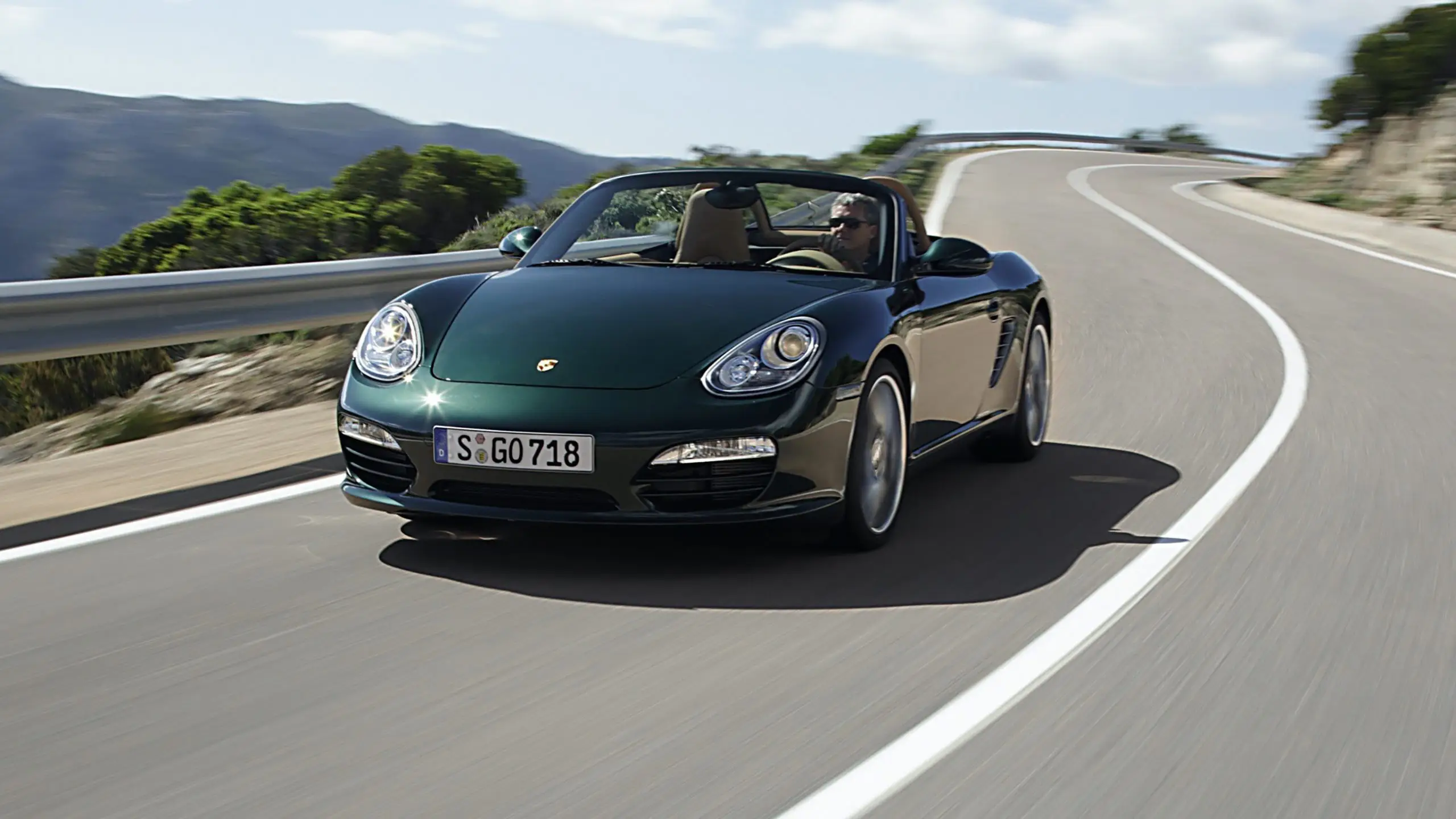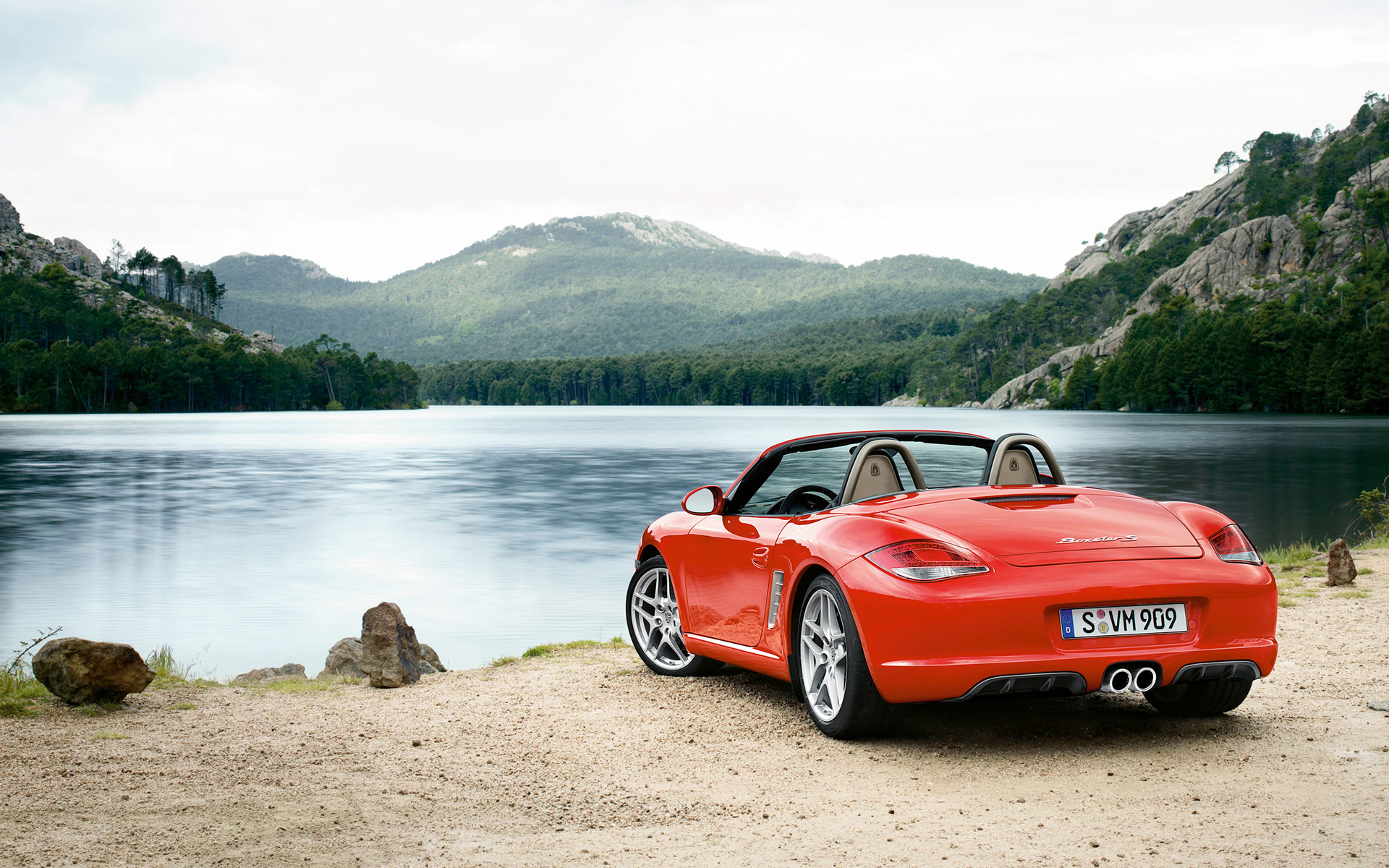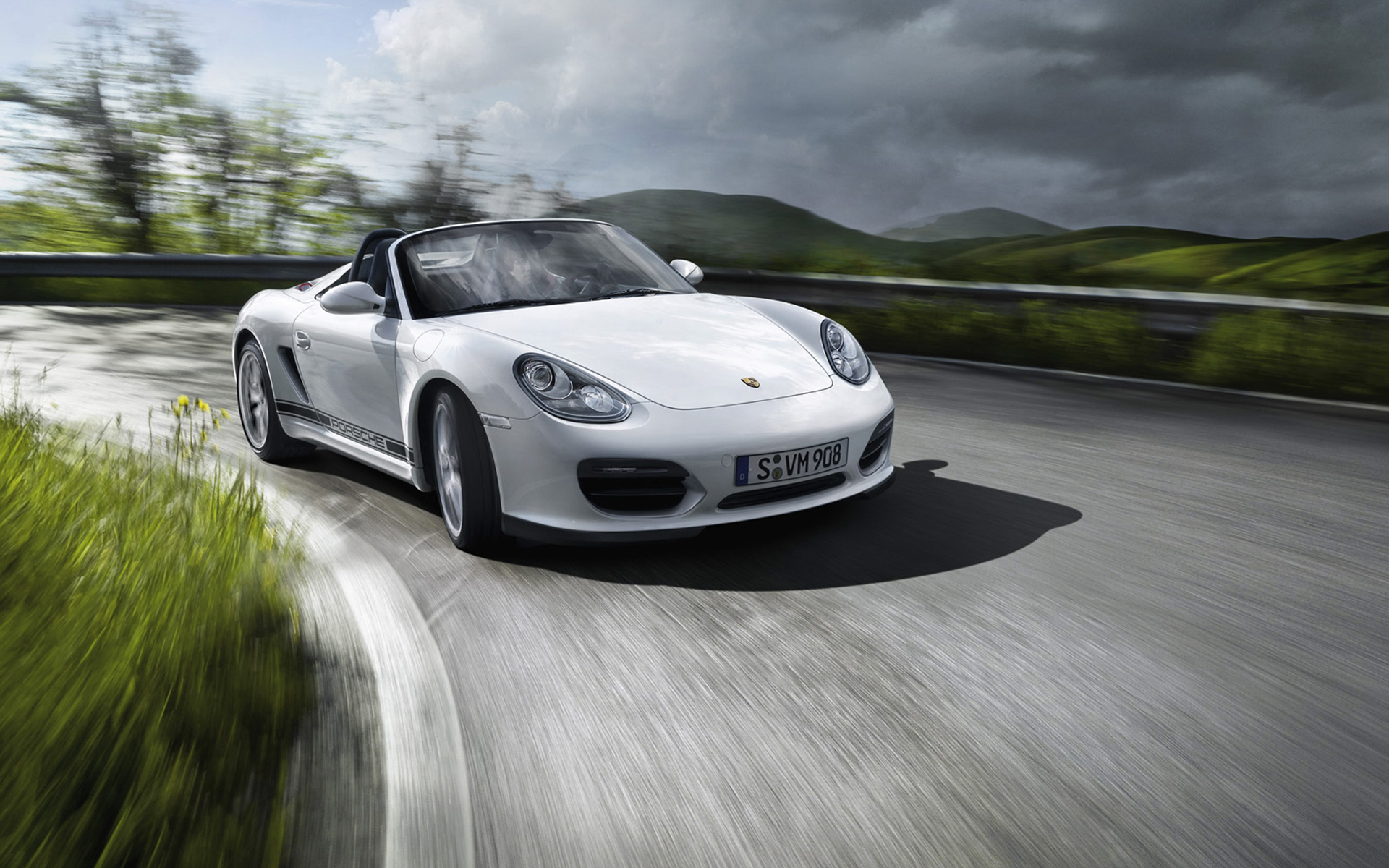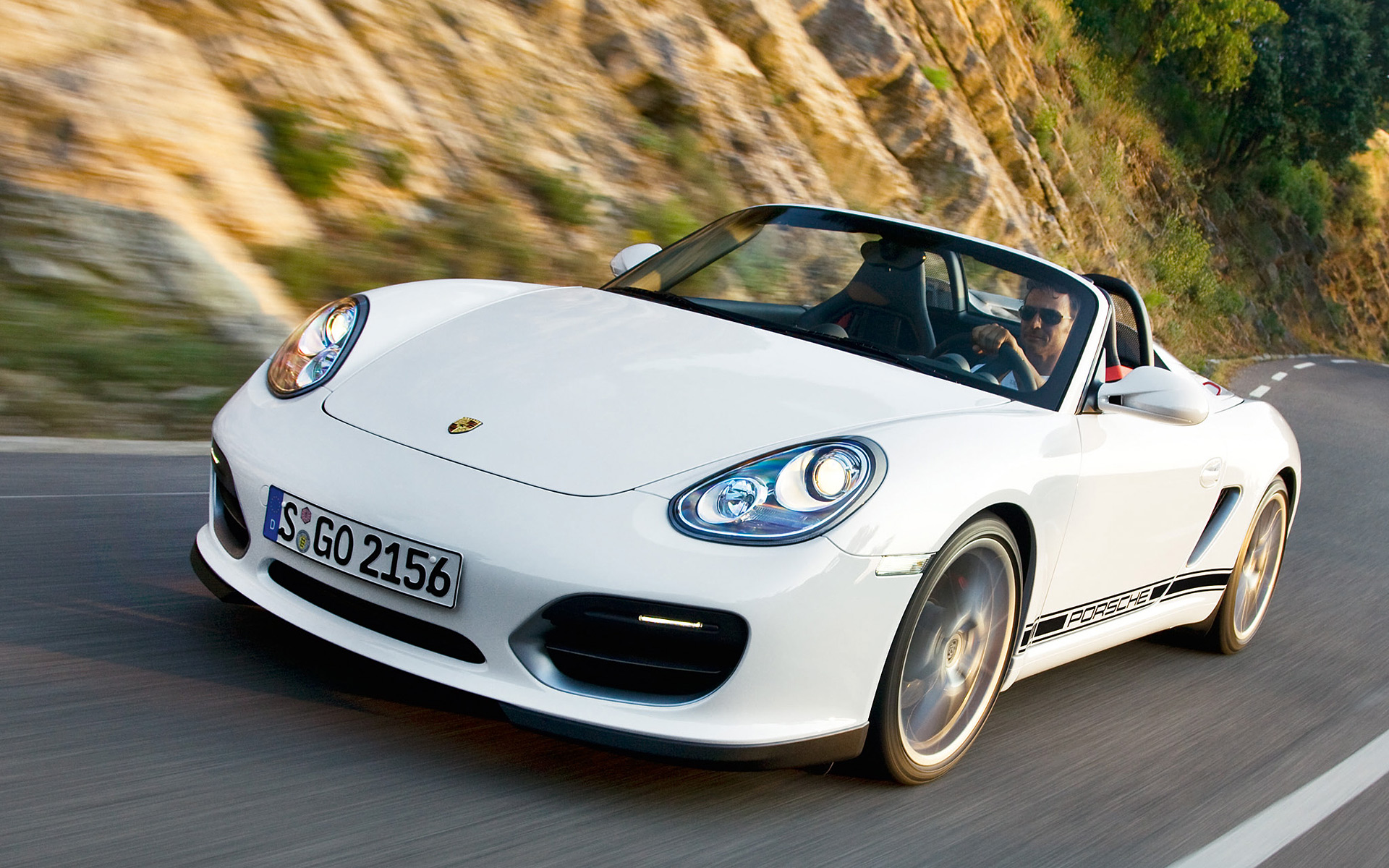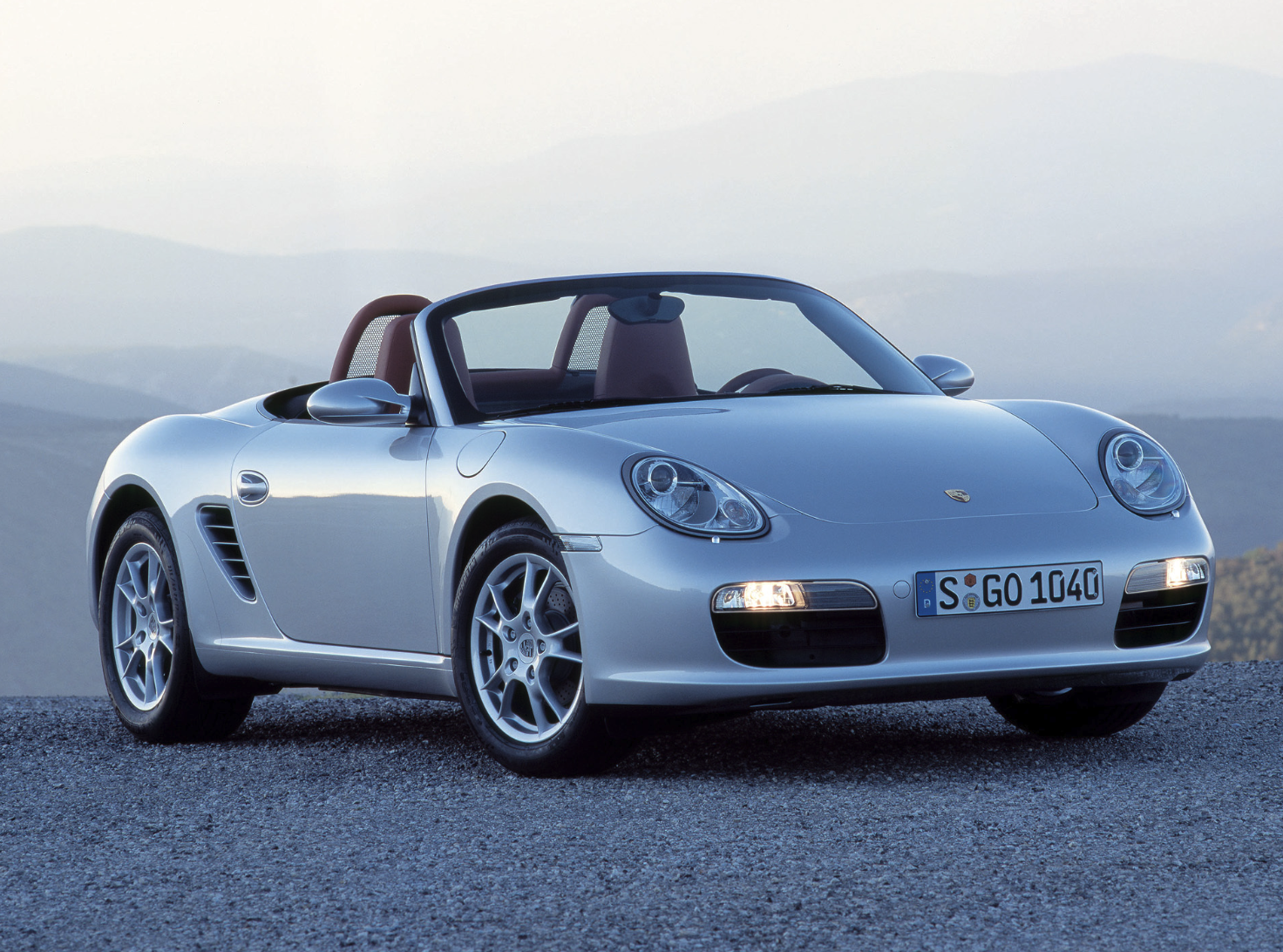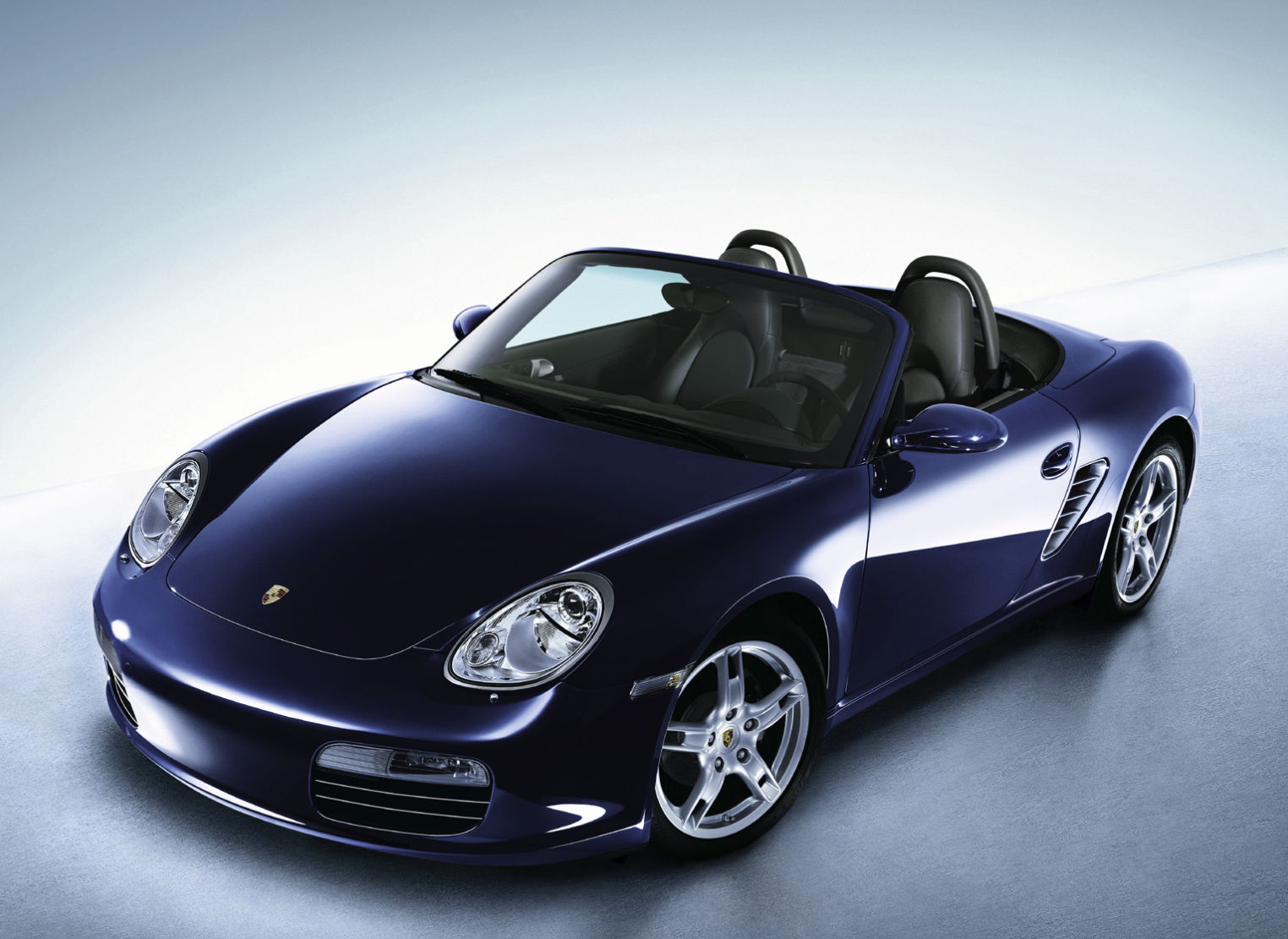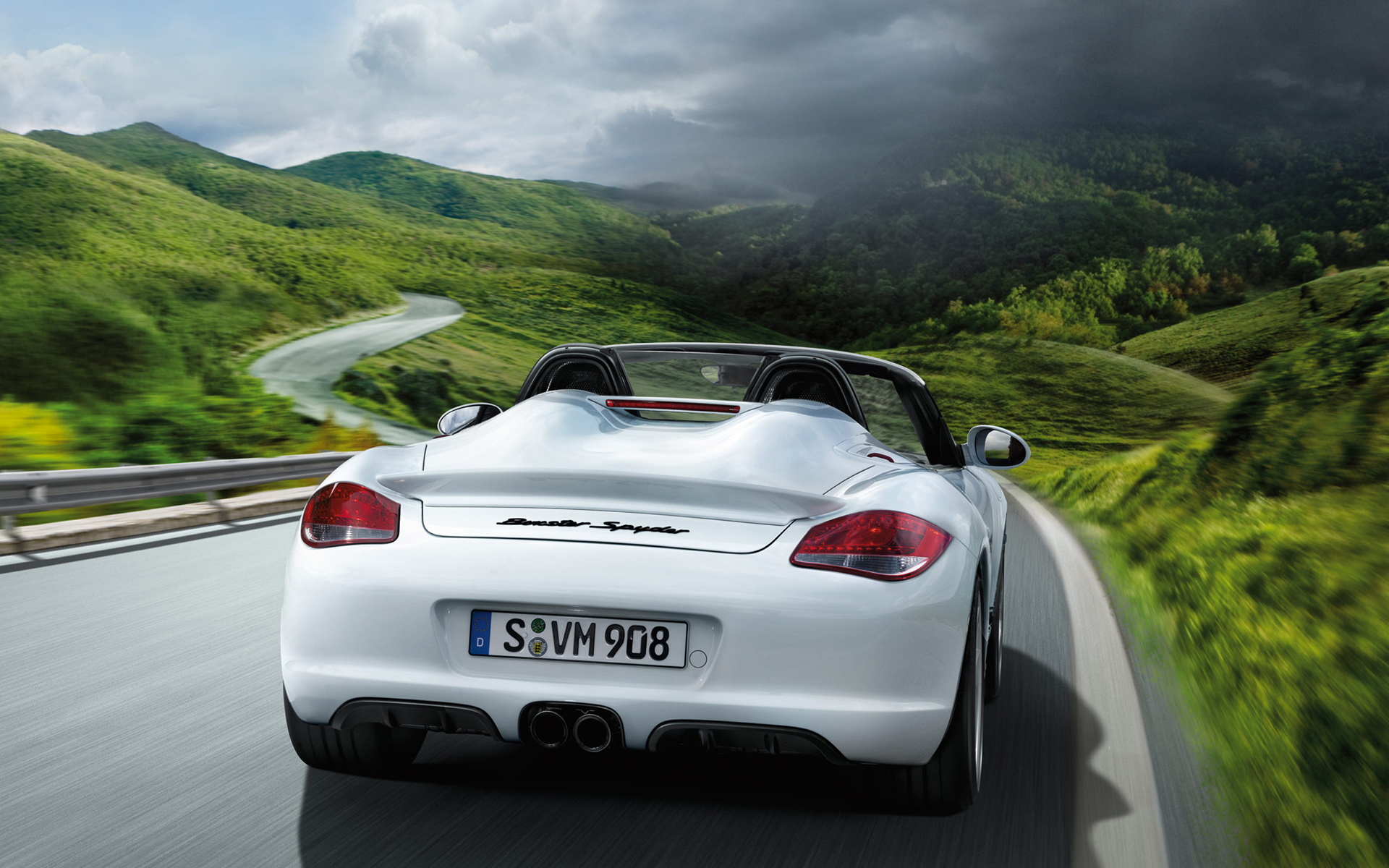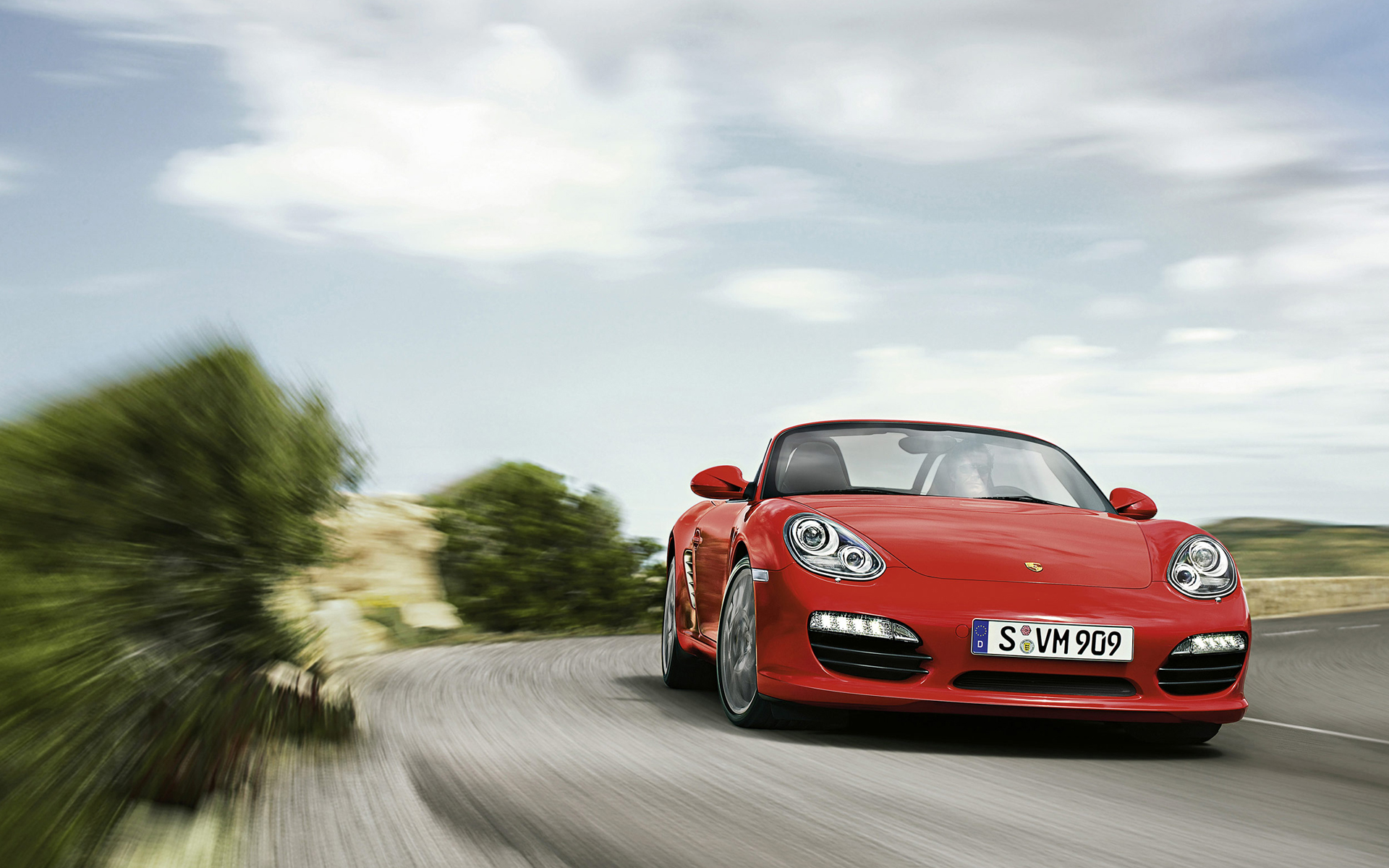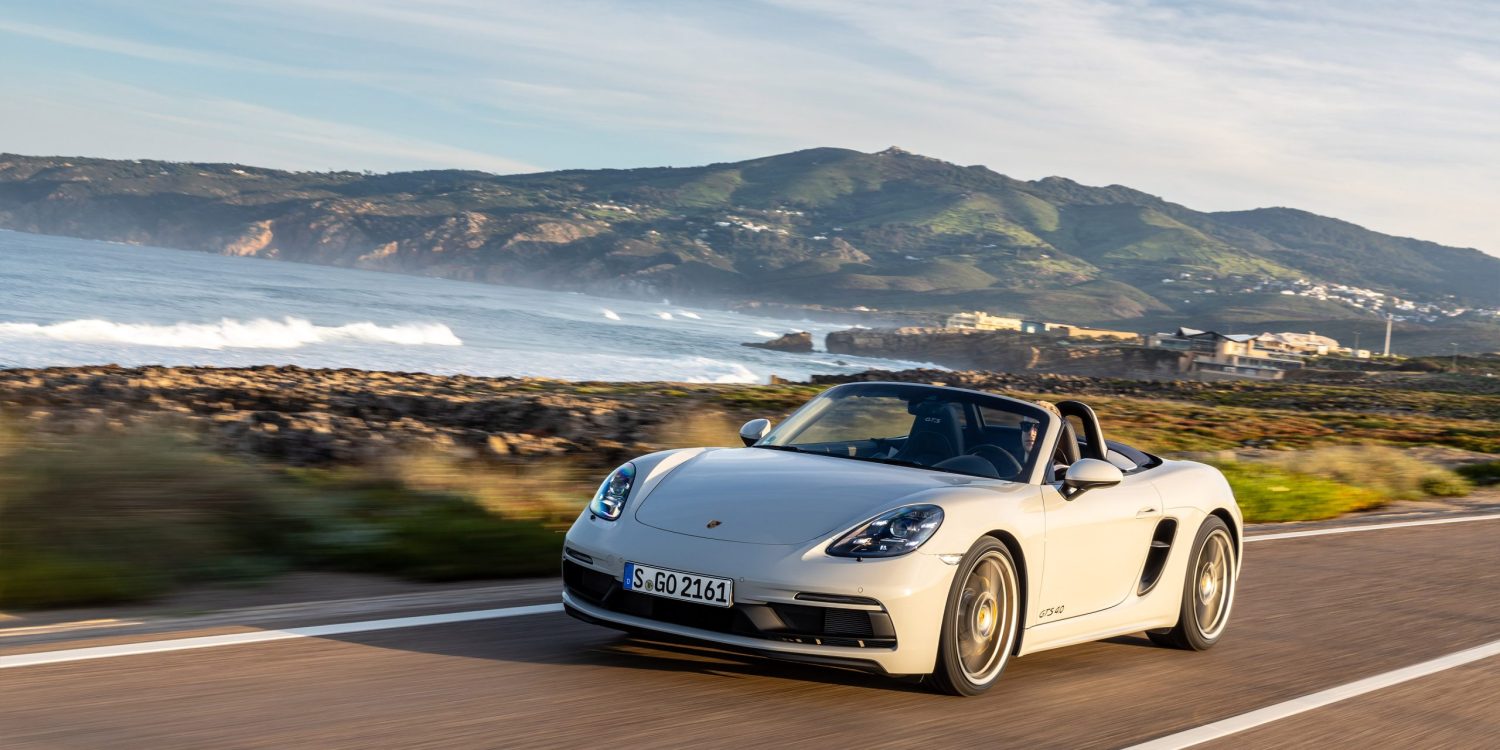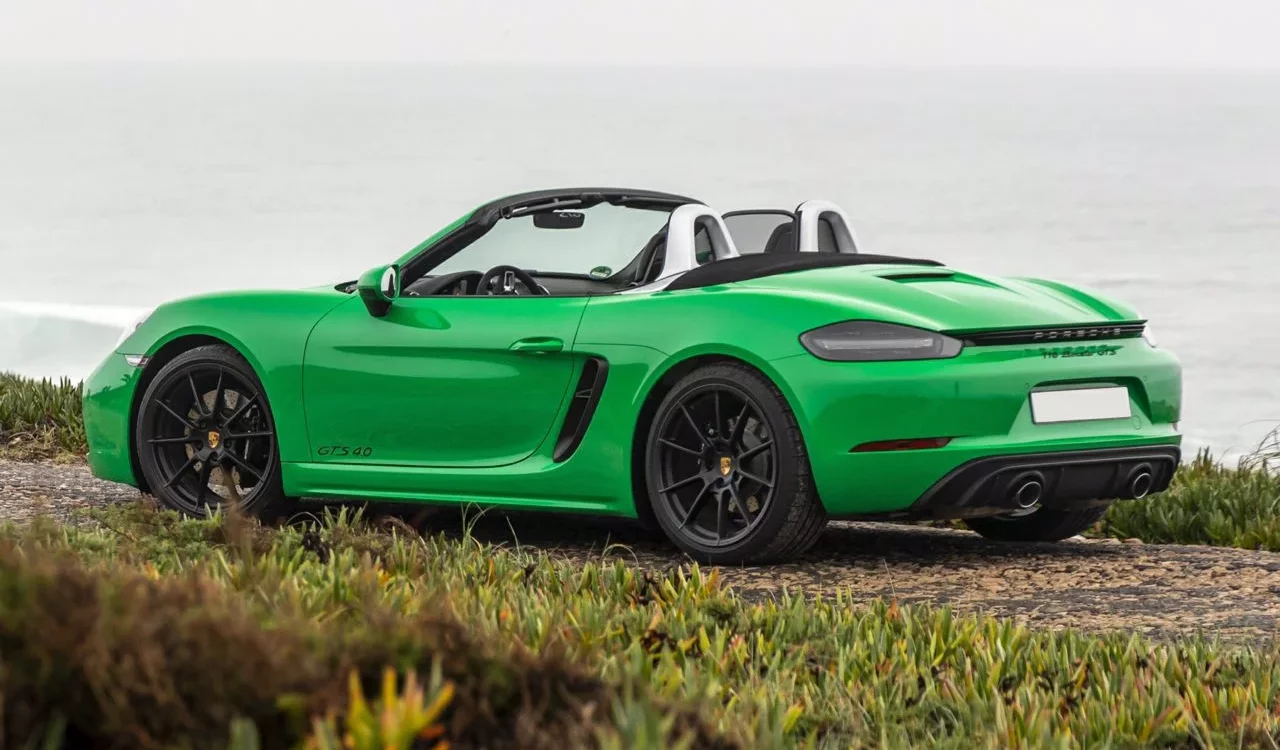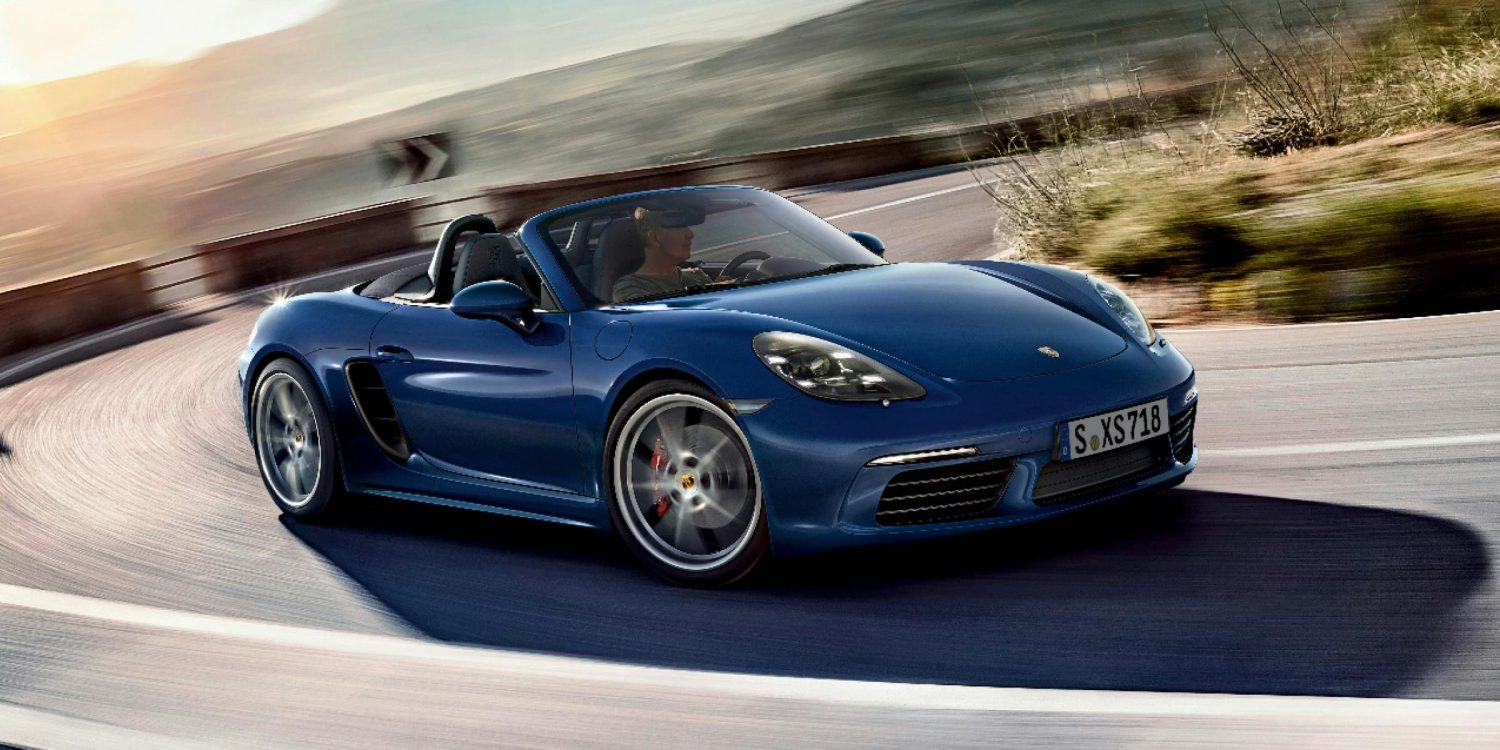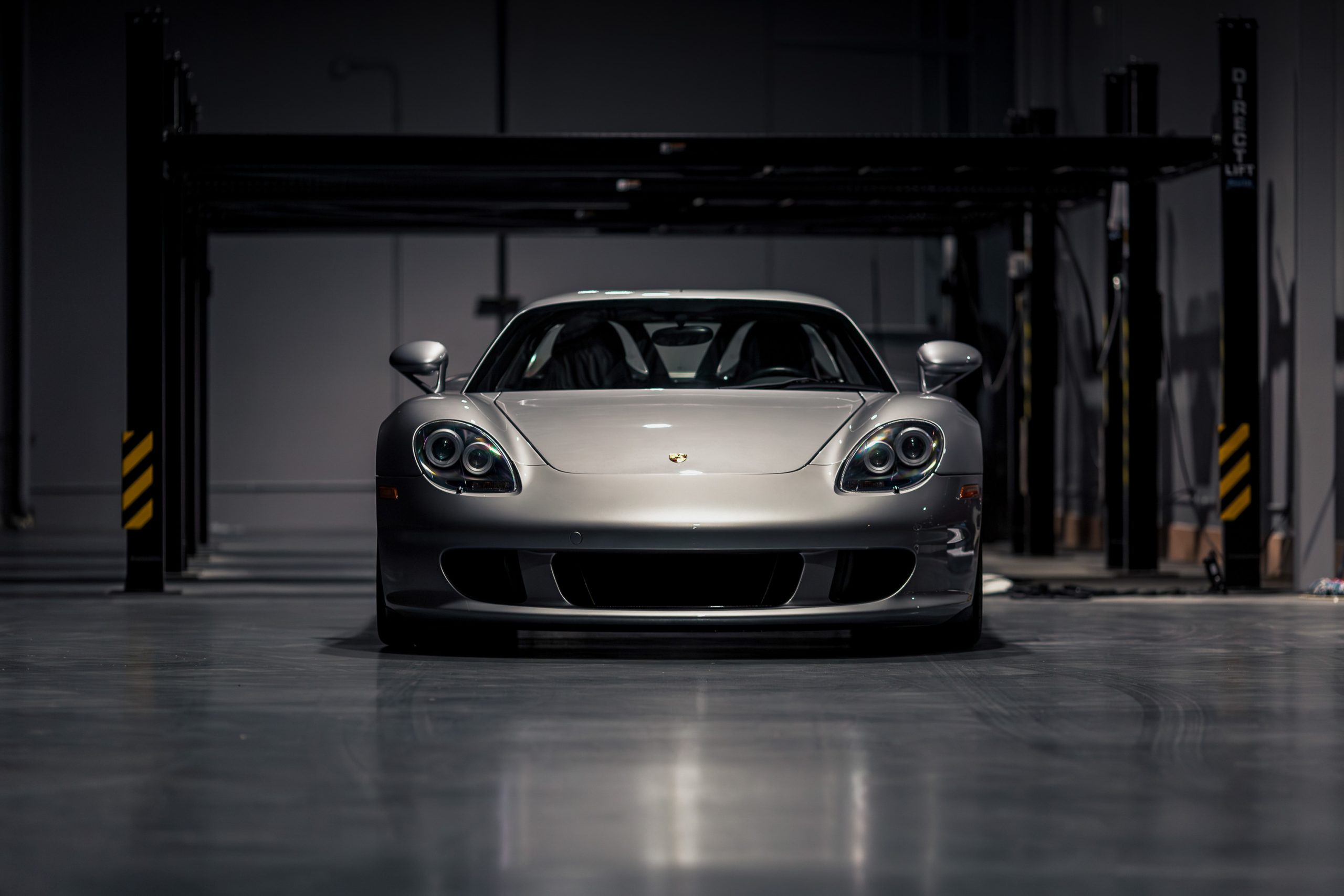2nd Generation Porsche Boxster 987 Buyer's Guide
Buying a second generation Boxster? Our Guide Covers Key Models, Potential Issues, Values, Tips & More.
The second-generation Porsche Boxster (987, 2005–2012) marked a significant evolution of Porsche’s iconic mid-engine roadster. With sharper styling, improved interior quality, more powerful flat-six engines, and refined driving dynamics, the 987 brought the Boxster closer than ever to its 911 sibling in both performance and prestige—while still offering one of the purest open-top driving experiences on the market. As the sweet spot between analog charm and modern reliability, the 987 has become a go-to choice for savvy buyers looking to experience Porsche excellence without breaking the bank.
This 2nd Generation Boxster Buyer’s Guide covers everything you need to know: from the key model variants (Base, S, and later the coveted Spyder) to common problems, maintenance costs, real-world pricing trends, and expert tips on what to look for. Whether you’re interested in an early 987.1 with its mechanical simplicity, or the later 987.2 with its direct fuel injection and upgraded tech, we help you navigate the model years, options, and potential pitfalls to find the Boxster that suits your needs and budget.
Among the most desirable choices are the 2009–2012 987.2 Boxster S models, which feature the revised 3.4L DFI engine (free from IMS bearing concerns), a reworked PCM infotainment system, and stronger long-term reliability. But even well-maintained earlier 987.1s offer exceptional value and driving pleasure, especially when paired with the 6-speed manual and sport options. No matter which way you lean, the 987 generation is a brilliant expression of Porsche’s sports car DNA—and with used values remaining accessible, now is a fantastic time to buy in.
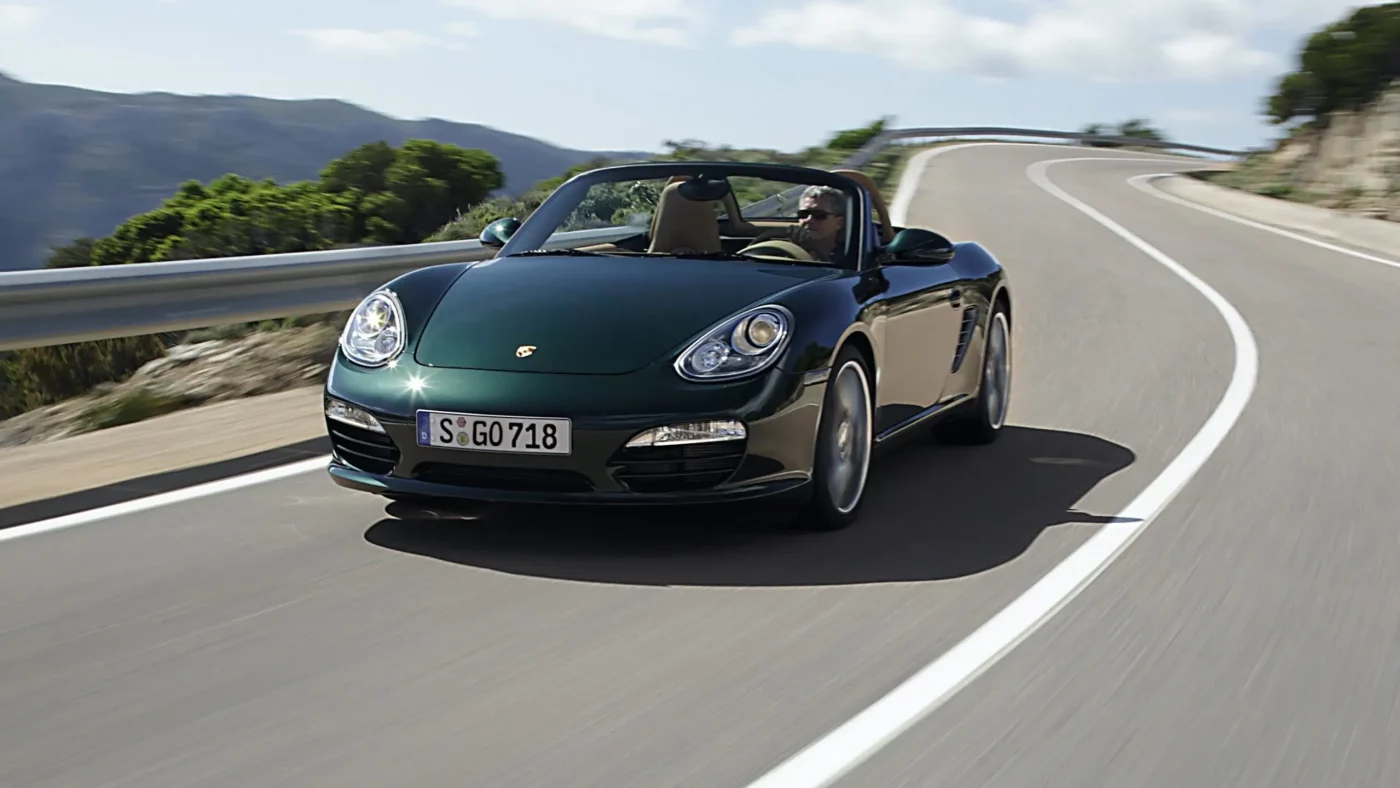
Why the 2nd Gen Porsche Boxster 987 is a Unique Classic to Buy
The Porsche Boxster 987 represents a unique sweet spot in Porsche’s history—offering a perfect blend of timeless design, mechanical purity, and real-world usability that makes it one of the most compelling and underappreciated sports cars on the used market today. As the second generation of the Boxster, the 987 retained the balanced mid-engine layout and open-air charisma of the original 986, but refined nearly every aspect of the experience. It’s a car that manages to feel both modern enough to be daily driven and classic enough to appeal to purists, and that rare duality is a big part of what makes it such a unique buy.
One of the most compelling aspects of the 987 is how it feels behind the wheel. With naturally aspirated flat-six engines, hydraulic steering, and compact proportions, it delivers an engaging, analog driving experience that’s increasingly hard to find in today’s market of turbocharged, over-digitized sports cars. The chassis is neutral and communicative, the steering offers rich feedback, and whether you choose the 5-speed, 6-speed manual, or even the early Tiptronic/PDK autos, the car always feels composed, poised, and rewarding. It’s a car that encourages spirited driving, yet remains approachable and confidence-inspiring for newcomers.
Another reason the 987 stands out is its broad appeal and variety within the lineup. From the early 987.1 models (2005–2008) with the more raw mechanical feel, to the updated 987.2 (2009–2012) with direct fuel injection (and no IMS bearing worries), buyers can find the right balance of character, refinement, and budget. The 987.2 Boxster S, in particular, with its 3.4-liter DFI engine and optional sport chrono, is often hailed as the sweet spot for performance enthusiasts—delivering 310 horsepower in a car that still weighs less than many modern compacts. And if you're looking for something even more special, the lightweight Boxster Spyder variant is already regarded as a future classic.
Finally, the 987 is aging gracefully. Thanks to timeless proportions, quality materials, and understated yet purposeful design, these cars still look fresh today. More importantly, they don’t just look like Porsches—they drive like Porsches, with a level of driver engagement that many newer models sacrifice in the name of comfort and tech. For enthusiasts who want a proper sports car with character, pedigree, and long-term value, the Porsche Boxster 987 is an underrated gem that’s only getting more appreciated with time.
2nd Gen Boxster 987 Variants - A Quick Primer for Potential Buyers On The Variants & Specials To Think About.
We already have ultimate guide to the Porsche Boxster 987 so we don't want to repeat everything here. Instead, we will give you a quick primer and summary about the main second generation Boxster variants, some of the core model year changes and we will talk about some special editions worth noting as you think about your potential purchase.
Key Variants & Differences
The second-generation Porsche Boxster introduced a more refined, powerful, and visually modern take on the mid-engine roadster formula. Over its lifespan, the 987 was offered in a range of distinct variants—each with their own mechanical traits, performance levels, and desirability. Understanding the differences between them is essential for any potential buyer, especially as the lineup includes both early 987.1 cars and the significantly updated 987.2 generation.
987.1 Base Boxster (2005–2008)
The entry-level 987.1 came with a 2.7-liter flat-six engine making 240–245 horsepower (depending on year), paired with a 5-speed manual or optional Tiptronic automatic. Despite being the base model, it offered exceptional handling thanks to its mid-engine layout and light weight. In 2007, displacement increased slightly to 2.7L from 2.5L, and horsepower rose accordingly. Buyer Note: These cars are excellent for drivers who prioritize balance and feel over outright speed. They're also typically more affordable, making them ideal first Porsches—though they still carry IMS bearing concerns in earlier production years.
987.1 Boxster S (2005–2008)
The 987.1 S bumped displacement to 3.2 liters (then 3.4L by 2007) and power to 280–295 horsepower, along with a 6-speed manual transmission or Tiptronic. It also included upgraded brakes, suspension tuning, and cosmetic enhancements (dual exhausts, red calipers). Buyer Note: The S is the enthusiast’s pick in the early range. Look for Sport Chrono, PASM (active suspension), and 18" or 19" wheels. Still susceptible to IMS failure depending on engine build date—so IMS retrofit or proof of later build year is key.
987.2 Base Boxster (2009–2012)
This mid-cycle refresh brought substantial upgrades: the base Boxster received a 2.9-liter DFI (Direct Fuel Injection) engine, now making 255 horsepower, mated to either a 6-speed manual or Porsche’s new 7-speed PDK dual-clutch transmission. The PCM infotainment system was also redesigned, and the interior gained subtle material and trim upgrades. Buyer Note: Crucially, 987.2 models no longer suffer from IMS bearing issues. These cars are smoother, more refined, and more robust overall, with better fuel economy and modern electronics.
987.2 Boxster S (2009–2012)
The S version of the 987.2 got a 3.4-liter DFI flat-six, producing 310 horsepower, and is considered by many to be the high point of the standard Boxster line before the 981 arrived. With quicker acceleration (0–60 in around 4.8 seconds), strong braking, and agile handling, it's an outstanding all-rounder. Buyer Note: If you want the best-driving and most reliable Boxster of this era, this is likely it. Paired with PDK and options like Sport Chrono and PASM, it offers 911-like performance at a fraction of the cost.
Boxster Spyder (2011–2012)
The most hardcore version of the 987 Boxster, the Spyder shed weight through aluminum doors, a manually operated soft top, and minimal sound insulation. It used a tuned 3.4L engine with 320 horsepower, came with a lower stance, and only manual or PDK options. It’s raw, focused, and already considered a collector car. Buyer Note: The Spyder isn’t for everyone—it sacrifices comfort for purity. But for drivers seeking a lightweight, analog Porsche experience, this is the ultimate 987. Expect higher prices and strong long-term value.
Final Thoughts for Buyers
When shopping for a 987 Boxster, your choice will come down to driving style, budget, and maintenance tolerance. The 987.1 offers classic Porsche character at a lower entry point but requires attention to IMS history. The 987.2, on the other hand, is the safer, more modern option with fewer mechanical concerns and better all-around usability. The Boxster S models from either era add excitement, while the Spyder is a rare treat for purists.
Model Year Changes (2005-2012)
The second-generation Porsche Boxster (987) had a production run from 2005 to 2012 and saw a number of key updates and refinements throughout its life. Broadly, the model can be divided into two distinct phases: the 987.1 (2005–2008) and the heavily revised 987.2 (2009–2012). Each brought mechanical, cosmetic, and technological improvements that are important to understand when shopping for one.
2005–2006: The Launch of the 987.1
The 987 debuted in 2005 with a completely redesigned exterior and interior compared to the 986. The new car looked more muscular and upscale, with larger wheels, sharper headlight and taillight designs, and a noticeably more refined cabin with better materials and ergonomics.
Mechanically, the base model featured a 2.7L flat-six (240 hp), while the Boxster S came with a 3.2L engine (280 hp) and a 6-speed manual. These early models retained a version of the M96 engine, still prone to intermediate shaft (IMS) bearing failure.
2006 saw minor updates, mostly to standard equipment and available options. Porsche added Porsche Active Suspension Management (PASM) and Sport Chrono Package as available upgrades, further sharpening the Boxster’s dynamic potential.
2007–2008: Power Increase and New Tech
In 2007, Porsche introduced upgraded engines across the board. The base Boxster received a 2.7L with 245 hp, and the Boxster S moved up to a 3.4L engine with 295 hp.
These were still part of the M97 engine family (a continuation of the M96), but with improved performance and a broader powerband. The extra torque made the Boxster S feel significantly more capable without sacrificing its playful handling.
During this period, Porsche also improved interior options and the PCM infotainment system, although it still lagged behind modern standards. Tiptronic S remained the automatic option, though most enthusiasts preferred the manual. These model years offered the most refined version of the 987.1, but still carried potential IMS-related risk.
2009: The Major Refresh – 987.2 Begins
2009 marked the launch of the 987.2, a major mid-cycle update that brought both mechanical and aesthetic improvements. The biggest change was the introduction of Direct Fuel Injection (DFI) engines, which eliminated the IMS bearing and brought improved fuel efficiency, power, and reliability.
The base Boxster now had a 2.9L flat-six (255 hp)
The Boxster S got a revised 3.4L engine (310 hp)
This was also the year Porsche introduced the PDK dual-clutch automatic transmission, replacing the outdated Tiptronic. Visually, the 987.2 was nearly identical to the earlier version but received LED running lights, new wheels, and minor bumper tweaks. Inside, the PCM system was updated with a touchscreen interface, Bluetooth support, and optional navigation, finally bringing the cabin into the modern era.
2010–2012: Refinement and Special Models
The final years of the 987 generation were focused on refinement and the introduction of more focused, enthusiast-oriented variants. In 2011, Porsche launched the Boxster Spyder, a lightweight, manual-top, purist model with a tuned 3.4L engine (320 hp) and significant weight savings. It quickly became a collector’s favorite.
Aside from the Spyder, these late 987.2 models offered incremental improvements, better standard equipment, and an increasingly strong reputation for reliability thanks to the improved drivetrain and electronics. By 2012, the 987 had become a matured, sorted platform—one that many enthusiasts now regard as the perfect blend of Porsche analog feel and modern usability.
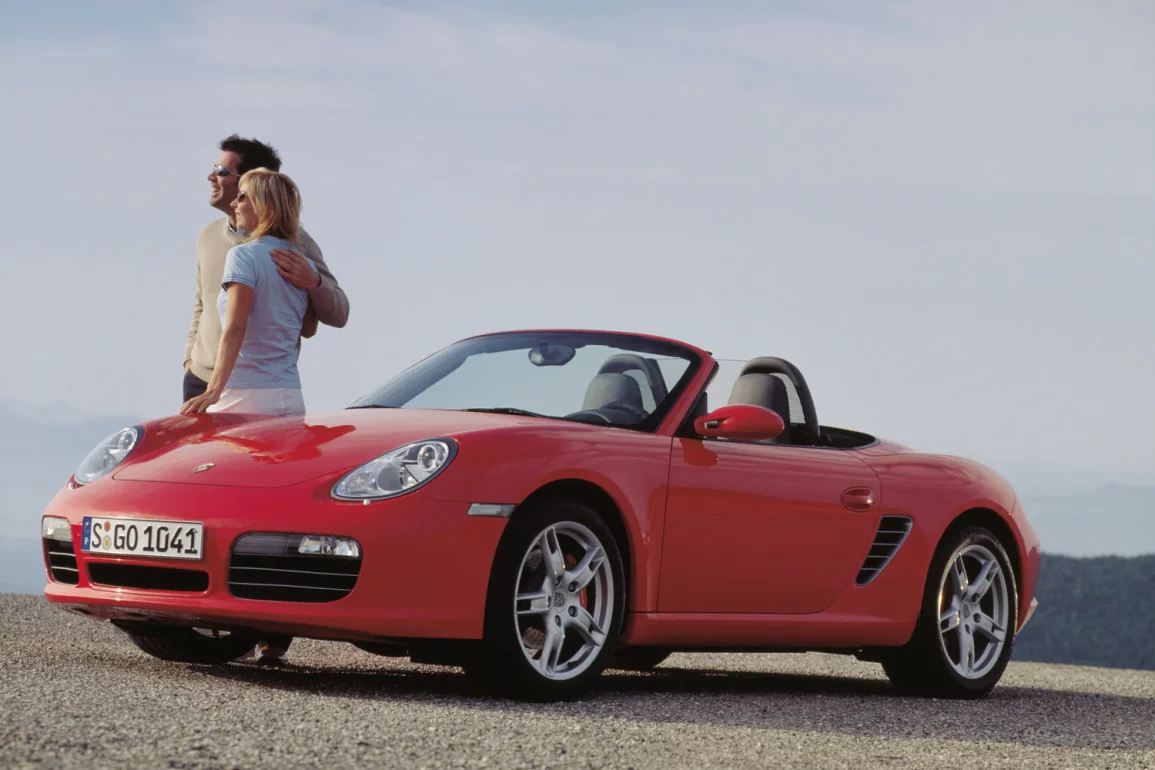
Second Generation Porsche Boxster Market Value & Pricing
The second-generation Porsche Boxster (987, 2005–2012) has emerged as a standout value in the modern used sports car market, particularly as enthusiasts rediscover its balance of analog feel and daily usability. Early 987.1 models (2005–2008) are the most affordable, with clean base examples typically ranging from $14,000 to $20,000, and well-kept Boxster S models commanding $20,000 to $28,000, depending on mileage, options, and service history. These earlier cars offer a compelling driving experience, but buyers should factor in potential maintenance costs—especially for cars that haven’t had the IMS bearing addressed.
The later 987.2 models (2009–2012) demand a premium thanks to their more powerful and reliable DFI engines, improved infotainment, and elimination of IMS concerns. Prices for base 987.2 cars usually start around $25,000, with Boxster S models ranging from $30,000 to $40,000+ depending on condition, options, and mileage. The rare and highly desirable Boxster Spyder (2011–2012) sits at the top of the value curve, often fetching $60,000 or more, and is already viewed as a future classic. As newer sports cars get heavier and more digital, demand for the lighter, more analog 987 continues to grow—making now a smart time to buy, before prices climb further.
Factors That Affect Value
It’s clear that values of second-generation Porsche Boxsters (987, 2005–2012) are shaped by a number of key factors that go well beyond mileage and model year. Because the 987 generation spans both the earlier 987.1 models with potential mechanical concerns and the later, more refined 987.2 models, buyers and sellers alike need to consider a broader matrix of attributes that influence pricing. Here are the most important elements that affect the value of a 987 Boxster today:
1. 987.1 vs. 987.2 – The Generation Divide
Perhaps the single most influential factor is whether the car is a 987.1 (2005–2008) or a 987.2 (2009–2012). The earlier 987.1 cars still use a version of the M96/M97 engine that can suffer from intermediate shaft (IMS) bearing issues, especially on pre-2006 builds. As a result, even excellent condition 987.1 models tend to trade at lower prices than their 987.2 counterparts. In contrast, the 987.2 cars received Direct Fuel Injection (DFI) engines and the PDK transmission, making them more reliable, faster, and more desirable—hence commanding a premium in the used market.
2. Model Variant – Base vs. S vs. Spyder
As with all Porsches, variant matters. The Boxster S, with its larger engine (3.2L in 987.1, 3.4L in 987.2), stronger brakes, and 6-speed manual, is seen as the sweet spot for performance buyers. These cars are consistently worth 20–30% more than base models in similar condition. At the top of the ladder is the Boxster Spyder (2011–2012)—a lightweight, enthusiast-focused model that already has collector appeal and commands a significant premium due to its rarity, manual-only configuration, and stripped-down ethos.
3. Condition, Mileage, and Maintenance Records
Like any older performance car, condition is king. A lower-mileage Boxster with a complete service history, clean Carfax, and recent preventative maintenance (e.g., brakes, tires, fluid services, clutch) will always fetch more than a higher-mileage example with spotty documentation. Especially on 987.1 cars, evidence of IMS bearing upgrades, RMS seal work, and cooling system service is critical. Buyers pay a premium for confidence—and walk away quickly from neglected or questionable cars, even if the price looks attractive.
4. Transmission Type – Manual vs. PDK vs. Tiptronic
Transmission choice has a big influence on value. For 987.1 models, manual gearboxes are preferred—Tiptronic automatic cars are often worth several thousand less due to their slower, less engaging behavior. For 987.2 models, Porsche's PDK dual-clutch transmission is highly respected and often valued nearly on par with the manual. Still, enthusiast buyers often favor the 6-speed manual, especially in S or Spyder trims, which can boost resale value due to relative rarity.
5. Options and Specification
Porsche’s build-to-order philosophy means that two Boxsters with the same model year and mileage can differ wildly in value based on factory options. Highly desirable features like Sport Chrono Package, PASM (adaptive suspension), Limited-Slip Differential, Bose audio, 18- or 19-inch wheels, and full leather interiors add not only enjoyment, but also long-term appeal and value. A well-optioned Boxster S will always command a stronger price than a base car with minimal spec.
6. Rarity, Color, and Presentation
Buyers are increasingly sensitive to color combinations and presentation. Unique or classic Porsche colors—like Speed Yellow, Guards Red, GT Silver, or special-order hues—often attract more attention and may yield a modest premium. In contrast, dull or dated combinations (especially beige interiors or flat greys) can reduce interest.
What You'll Pay
The second-generation Boxster (987, 2005–2012) offers an excellent entry point into Porsche ownership, with values that reflect both the model's aging status and growing enthusiast appeal.
Pricing varies widely depending on whether you're shopping for an early 987.1, a post-refresh 987.2, or one of the rare special variants like the Boxster Spyder. Condition, mileage, maintenance history, and specification all play a significant role in determining what you’ll pay.
Let’s start with the 987.1 base models (2005–2008), which are currently the most affordable.
A clean, higher-mileage example with 80k–100k miles and average options can be found in the $14,000–$18,000 range. If the car has had the IMS bearing addressed (for 2005–2006 models) and includes desirable options like 18-inch wheels or Sport Chrono, expect to pay closer to $20,000–$22,000 for a lower-mileage, well-maintained example. These base cars offer excellent balance and are popular among buyers seeking a pure, analog Porsche driving experience without a huge financial commitment.
The 987.1 Boxster S models, which offer more performance with their 3.2L and later 3.4L flat-six engines, usually start around $20,000–$24,000 for good-condition cars with higher miles.
Well-kept, lower-mileage examples—especially those with a 6-speed manual, Sport Chrono, and full service history—can push up into the $28,000–$32,000 range. These cars still carry potential IMS concerns but deliver a significantly more engaging drive than the base variant, and they remain the “sweet spot” for budget-conscious enthusiasts who want real performance.
Prices rise noticeably with the 987.2 models (2009–2012), which brought DFI engines (no IMS bearing), updated tech, improved reliability, and the availability of PDK. A 987.2 base Boxster typically starts around $25,000–$28,000, with well-equipped examples and lower miles approaching $32,000–$35,000.
The 987.2 Boxster S is where values jump significantly—these cars commonly sell between $35,000–$45,000, depending on mileage and options, and remain in high demand for buyers who want performance, peace of mind, and modern amenities in one package.
At the top of the market sits the Boxster Spyder (2011–2012). With its stripped-down ethos, lightweight panels, and enthusiast-first design, the Spyder is already being recognized as a modern classic.
Expect pricing to start around $55,000–$60,000 for higher-mileage cars, with well-optioned, low-mile examples commanding $70,000 or more. These are rare cars (fewer than 2,000 came to North America), and their values are holding strong thanks to limited production and growing collector interest.
In today’s market, the 987 remains a tremendous value, particularly if you prioritize driver engagement over tech gimmicks. However, the days of sub-$10K Boxsters—even rough ones—are largely behind us. With interest climbing, now is a smart time to buy a sorted example before values begin to appreciate further—particularly for late 987.2s and the increasingly coveted Boxster Spyder.
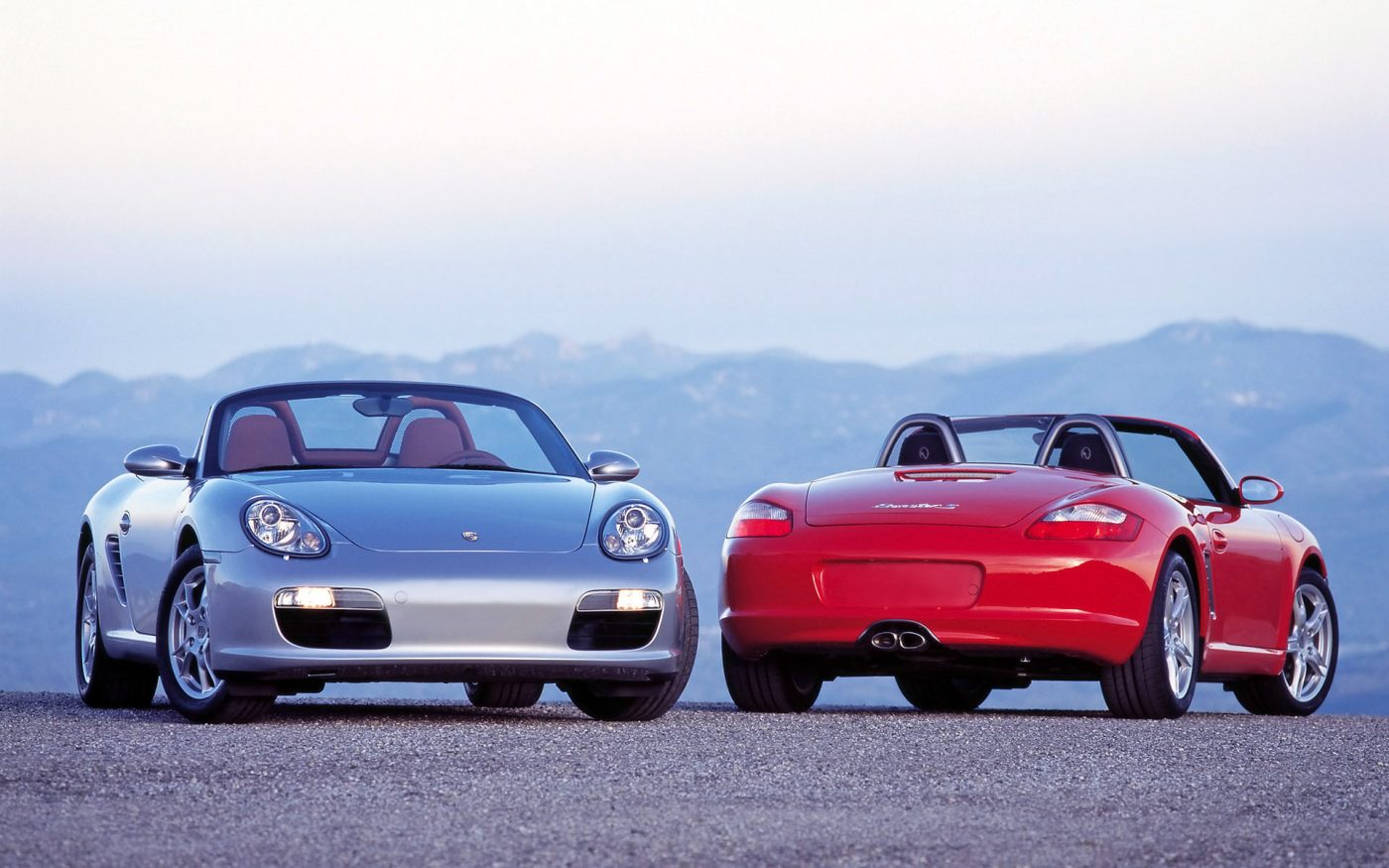
2nd Gen Boxster Driving Experience & What to Expect
What They Said at The Time
When the Porsche Boxster 987 was first released in 2005, it was widely praised by journalists and automotive publications for elevating the mid-engine roadster formula established by the 986. The improvements in design, interior quality, and performance were immediately recognized, with Car and Driver noting that the 987 was
“a more mature and refined car in every way”
compared to its predecessor. They praised its balance and poise, stating:
“The Boxster S gives you about 90 percent of the 911 experience for far less money—and in some ways, it’s even better balanced.”
That sentiment became common across reviews, particularly regarding the Boxster’s sharp steering and neutral chassis.
The Boxster S variant, with its larger engine and more aggressive tuning, received even more attention from performance-focused outlets. Road & Track described the 3.2L (later 3.4L) engine in the S as
“beautifully responsive and intoxicating,”
and emphasized the car’s ability to devour twisty roads with confidence and ease. EVO Magazine praised the car’s handling, writing in a 2006 review that
“the Boxster S remains the benchmark for pure driving pleasure in this class—it feels surgically precise, without ever becoming clinical.”
Reviewers consistently highlighted how accessible the car’s performance was, even for less experienced drivers, and how the steering, brakes, and balance worked in concert to deliver a sports car experience on par with far more expensive vehicles.
When the Boxster Spyder arrived in 2010, it marked a turning point in how the model was perceived. Gone was the notion of the Boxster as the "entry-level Porsche." Instead, the Spyder was embraced as a legitimate enthusiast’s car—a minimalist, lightweight machine built with purity in mind. Top Gear was effusive in its praise, calling it
“a raw, exhilarating driver’s car that feels more 911 GT3 than open-top cruiser.”
Motor Trend similarly raved about the Spyder’s precision and engagement:
“This is the Boxster in its purest, most rewarding form—light, responsive, and without compromise.”
The manual soft top, lowered ride height, and reduced weight contributed to a visceral experience that earned it comparisons to Porsche's own racing lineage.
Across its entire lifecycle, the 987 generation Boxster matured from a well-handling roadster into a genuinely respected sports car. The critical acclaim wasn't just about performance—it was also about how the car made drivers feel. With each model year and variant, the 987 proved to enthusiasts and critics alike that Porsche had crafted something more than just a baby 911—it had created a mid-engine icon in its own right.
What to Expect Today
Driving a second-generation Porsche Boxster today is a refreshing reminder of what sports cars used to feel like before weight, complexity, and software started dominating the driving experience. For a modern driver used to the filtered responses of newer vehicles—especially those with turbocharged engines or electronic steering—the 987 offers something fundamentally different: a raw yet refined, tactile, and deeply connected driving experience.
The first thing that stands out is the steering feel. Unlike today’s electric systems, the 987's hydraulic steering communicates everything—road texture, tire slip, weight transfer—without being overly heavy or fatiguing. It feels alive in your hands, particularly at speed, and makes the car immensely confidence-inspiring, especially when carving through corners. The mid-engine layout gives it sublime balance, allowing you to rotate the car through turns with precision and control. Whether you’re in a base model or an S, the chassis feels taut and willing, eager to be pushed but forgiving enough for spirited street driving.
In terms of performance, the base 2.7L or 2.9L Boxsters won’t overwhelm a modern driver with sheer acceleration (0–60 mph in about 5.5–6.0 seconds), but they make up for it with immediacy and character. The naturally aspirated flat-six loves to rev, and the throttle response—especially in the 987.2 DFI engines—is crisp and linear in a way turbocharged engines rarely are. The Boxster S, with its 3.2L or 3.4L engine, ups the ante considerably. With 280–310 horsepower, it feels genuinely quick, especially when paired with the slick-shifting 6-speed manual. PDK-equipped 987.2 models, while not as tactile as the manual, deliver lightning-fast shifts and a more modern daily-driving experience.
As a daily driver, the 987 holds up surprisingly well. The interior—though now showing its age in terms of tech—is logically laid out, supportive, and comfortable for long drives. Trunk space is generous thanks to the dual cargo areas (front and rear), and ride quality is firm but not punishing. The 987.2, in particular, feels refined enough for regular use, and the addition of Bluetooth, touchscreen navigation, and improved climate controls gives it just enough modernity to satisfy most drivers. Road noise with the top up is noticeable, but no worse than most convertibles, and the manual top on the Spyder is the only one that feels truly inconvenient day to day.
For someone coming from a modern sports car—or even a powerful EV like a Taycan or Model 3 Performance—the 987 will initially feel smaller, simpler, and a bit less urgent in straight-line speed. But within a few minutes behind the wheel, it becomes clear that the 987 is about feel, balance, and involvement. It’s a car that rewards focus and finesse rather than brute force. You won’t be blown away by numbers, but you’ll be smiling through every corner, enjoying the kind of engaged, analog driving experience that’s becoming increasingly rare today.
Getting Real - Costs to Own & Maintenance
Owning and maintaining a second-generation Porsche Boxster 987 is relatively affordable—by Porsche standards—but it’s still a precision-engineered sports car, and that means it comes with real costs. The 987 is generally considered one of the more cost-effective Porsche models to own, particularly when compared to 911s of the same era, but buyers should still plan for thoughtful maintenance and budget accordingly.
Routine Maintenance & Preventative Care
Basic maintenance for a 987 Boxster is quite reasonable. Oil changes (using quality synthetic oil and OEM filters) typically run $150–$250 at a good independent Porsche specialist. Brake pads and rotors cost $600–$1,000 per axle, depending on quality and whether it’s a base or S model. Annual service visits, which include fluids, inspections, and filters, often fall in the $500–$800 range. For cars equipped with the PDK transmission (in 987.2), the fluid and filter service is typically required every 40,000 miles and can cost $700–$1,200.
For 987.1 Boxsters (2005–2008), the biggest potential expense is addressing the IMS bearing, which can lead to catastrophic engine failure if not upgraded. Not every 987.1 has the problematic bearing, but for those that do, a retrofit can cost $2,000–$3,000, especially when combined with a clutch job (recommended to do both at once). 987.2 Boxsters (2009–2012) use the newer DFI engine and are free of IMS concerns, making them less expensive to maintain over time.
Parts Availability & Specialist Support
One of the 987’s strengths is its parts availability and shared mechanical DNA with the 997-generation 911. Most consumables—brakes, filters, fluids, belts, etc.—are widely available from OEM and aftermarket suppliers. Porsche specialists are common in most metro areas, and many owners successfully manage costs by using independent shops instead of dealerships. Labor rates vary, but expect $120–$160 per hour for qualified Porsche service in most regions. DIY maintenance is also realistic for mechanically inclined owners, as the 987 is well-documented and has an active enthusiast community.
Insurance Costs
Insurance for a 987 Boxster is typically moderate for a performance car, especially given its age. Premiums depend heavily on your location, driving history, and usage. For a clean, well-maintained Boxster used as a weekend or pleasure car, expect annual insurance costs in the $700–$1,200 range. Many owners take advantage of collector car insurance policies or agreed value coverage, which can further reduce costs if the car is driven infrequently and stored properly.
Unexpected Costs & Long-Term Ownership
Like any aging German car, deferred maintenance is the real wallet killer. Cooling system issues (coolant expansion tank, water pump), convertible top mechanism repairs, worn suspension bushings, or electronics like window regulators and ignition switches are all potential mid-to-long-term repairs. Expect to budget $1,500–$2,500 per year on average, more if you’re catching up on prior neglect. That said, a well-maintained car with full records can offer years of reliable fun with relatively predictable expenses.
The Porsche 987 Boxster strikes an ideal balance: it delivers an engaging sports car experience with manageable running costs—as long as you buy smart. A fully sorted car with service history, especially a 987.2, is unlikely to surprise you with catastrophic expenses. While it won’t be as cheap to own as a Miata or Z4, it offers a level of driving joy and refinement that more than justifies the extra cost. For enthusiasts who budget responsibly and stay ahead of maintenance, the 987 is one of the best-used Porsches you can own without breaking the bank.
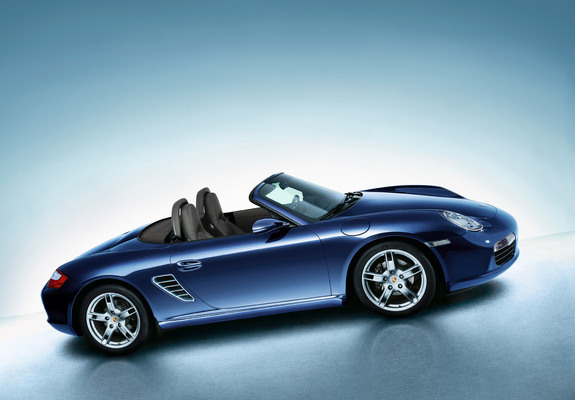
Common 2nd Gen Porsche Boxster Problems
What Buyers Should Know
The second-generation Boxster is a well-engineered and generally reliable sports car, it’s not without its common issues—particularly on earlier 987.1 models. Understanding these known weak points is crucial when buying or owning a 987 Boxster, as some issues can be costly if left unaddressed, while others are more of an annoyance than a dealbreaker. The good news is that most of these problems are well-documented, and a pre-purchase inspection (PPI) by a Porsche specialist can help avoid major headaches.
1. IMS Bearing (987.1 Only – 2005 to early 2008)
The intermediate shaft (IMS) bearing issue is the most infamous problem carried over from the 986 generation. It affects some 987.1 models—particularly 2005–2006 cars and select 2007 builds—equipped with the M96/M97 engine. If the bearing fails, it can cause catastrophic engine damage. Porsche revised the bearing design over time, and by the 987.2 generation (2009+), this issue was eliminated entirely with the adoption of Direct Fuel Injection (DFI) engines. What buyers should know: Ask for documentation showing whether the IMS has been addressed. If not, budget $2,000–$3,000 for a retrofit (often done alongside clutch replacement).
2. Rear Main Seal (RMS) Leaks
Oil leaking from the rear main seal is another common issue on earlier 987.1 cars. It’s not always catastrophic, but it can lead to clutch contamination if severe. Porsche improved the seal design over time, so this issue is far less common on 987.2 models. What buyers should know: A small seep may not be urgent, but active leaking should be addressed. Fixing an RMS typically requires removing the transmission—another reason to combine it with clutch or IMS work.
3. Air/Oil Separator (AOS) Failure
The air/oil separator is a common failure point on both 987.1 and 987.2 cars. Symptoms include smoke at startup, poor running, or oil in the intake. While not hugely expensive to replace, a failing AOS can be annoying and affect drivability. What buyers should know: If the car smokes on startup or under deceleration, have the AOS checked. It’s a relatively routine repair that costs $500–$1,000 depending on labor rates.
4. Convertible Top Issues
The Boxster's power-operated soft top mechanism can suffer from cable failures, motor issues, or worn clamshell transmissions. Water leaks from clogged drains are also common, especially around the rear bulkhead and battery tray. What buyers should know: Make sure the top operates smoothly and fully, without grinding or hesitating. Check for signs of water intrusion in the cabin or trunk. Regularly clearing drain holes can prevent future issues.
5. Cooling System Wear
Radiators, water pumps, and expansion tanks are known wear items. Front-mounted radiators can become clogged with debris or corroded, especially in cars driven in dusty or coastal environments. Expansion tanks often crack with age. What buyers should know: Monitor coolant levels and temperature. A bubbling coolant tank or frequent refills are red flags. Replacing the water pump or tank is typical around 60k–80k miles.
6. Suspension & Bushings
With age, components like control arm bushings, tie rods, and suspension mounts begin to wear, leading to clunks, vague handling, or uneven tire wear. What buyers should know: Suspension wear is expected around the 60k–100k mile range. Fortunately, parts are readily available and not outrageous in cost, though a full refresh can run $1,500–$2,500 if done thoroughly.
7. Electronics & Interior Trim
Some 987s suffer from window regulator failures, sticky interior buttons, or faulty ignition switches. These are minor in the grand scheme but still worth noting. The PCM (Porsche Communication Management) system on 987.1 cars is also outdated and prone to glitches. What buyers should know: Confirm that windows drop and raise correctly when opening doors, and test all switches. PCM 2.1 units (in pre-2009 cars) are basic but often replaced with modern head units by owners.
The Porsche 987 Boxster is generally a solid and well-sorted car, particularly the 987.2 (2009–2012) models which eliminated many early engine issues. Most of the problems above are age- and mileage-related, not defects—meaning a well-maintained car can be incredibly reliable. The key for buyers is simple: prioritize maintenance history, look for recent major service work, and always get a thorough pre-purchase inspection. If you do, you’ll find that a 987 Boxster delivers a Porsche driving experience with excellent long-term value and relatively few surprises.
Buying A 2nd Gen Porsche Boxster 987 FAQs
Here are all the questions we've received from readers considering a 2nd Gen Boxster for their driveway
What are the top five things to look for when buying a 2nd gen Boxster?
When buying a second-generation Porsche Boxster (987, 2005–2012), focusing on a few critical areas can mean the difference between getting a fantastic sports car or inheriting someone else’s costly problems. Here are the top five things to look for—each of which can heavily influence the car’s value, reliability, and long-term ownership experience:
1. Generation & IMS Bearing Risk (987.1 vs. 987.2)
First, determine whether you’re looking at a 987.1 (2005–2008) or a 987.2 (2009–2012). The earlier 987.1 cars may still have the potentially problematic IMS bearing—particularly 2005–2006 builds. Some have had the bearing replaced or upgraded; others haven’t, which adds risk and expense. In contrast, 987.2 models feature Direct Fuel Injection (DFI) engines, eliminating the IMS concern entirely and offering improved reliability, fuel efficiency, and performance. What to do: Check engine codes and documentation. If you’re considering a 987.1, look for proof of an IMS retrofit or factor in the cost (~$2,000–$3,000) to address it proactively.
2. Full Service History & Maintenance Documentation
A Porsche is only as good as its maintenance history. These cars respond well to routine servicing, and deferred maintenance often leads to expensive repairs down the road—particularly for items like the clutch, brakes, cooling system, and suspension bushings. What to do: Ask for service records, not just stamps in a book. Look for evidence of recent major services (e.g., clutch/IMS, water pump, spark plugs, fluids). Cars with consistent Porsche specialist care are always worth more—and will give you peace of mind.
3. Convertible Top Condition & Drain Maintenance
The Boxster’s power soft top is a mechanical system with motors, cables, transmissions, and seals. If neglected, repairs can be expensive. Water drainage is another issue—clogged drains can cause interior flooding or electrical damage. What to do: Make sure the top opens and closes smoothly without abnormal noise or hesitation. Inspect the cabin and trunk for water stains or musty odors. Ask the seller if the drains have been routinely cleared.
4. Transmission Choice & Driving Feel
Transmission choice matters. On 987.1 cars, manual transmissions are more desirable than Tiptronic automatics, which feel dated and less engaging. With the 987.2, PDK becomes a great option, offering lightning-fast shifts and modern convenience—though many enthusiasts still prefer the 6-speed manual for maximum driver involvement. What to do: Decide what suits your driving style, then confirm it works properly. Manuals should shift smoothly with no grinding; PDK should be crisp, and Tiptronic should downshift predictably.
5. Desirable Options & Overall Condition
Porsches were highly configurable, and well-optioned Boxsters tend to hold their value better. Look for sought-after extras like Sport Chrono Package, PASM (adaptive suspension), 18- or 19-inch wheels, full leather interior, and even factory navigation (in 987.2 models). But just as important is overall cosmetic and mechanical condition—worn interiors, damaged paint, or suspension noise should raise red flags. What to do: Focus on the whole package. A moderately optioned car in excellent shape is better than a loaded one with signs of neglect. Clean, original paint, strong service history, and a tidy cabin usually signal a car that’s been properly cared for.
In short, the best 987 Boxster to buy is one that has been well-maintained, comes with full documentation, and either avoids or addresses known weak points. A thoughtful purchase up front will save thousands later—and deliver one of the most rewarding sports car experiences under $40K.
Just how important are service records and ownership history?
When it comes to buying a second-generation Porsche Boxster (987), service records and ownership history aren’t just important—they’re essential. These cars are now at least a decade old, and while Porsche built them with excellent engineering, longevity depends entirely on how well each individual car has been cared for. A clean ownership trail and detailed maintenance history often make the difference between a smart, worry-free buy and an expensive mistake.
A complete set of service records tells a story—how often the car was driven, whether routine maintenance was done on time, and if any of the known issues (like IMS bearing replacement on 987.1 models, clutch work, or coolant system repairs) have already been addressed. For buyers, this isn’t just about peace of mind—it has direct financial implications. A car with documented preventative maintenance will almost always cost less to own long-term, while a neglected one, even at a lower price, can easily eat up your savings with deferred repairs.
Ownership history matters too, particularly in terms of how many hands the car has passed through. A Boxster with one or two long-term owners who clearly cared for it is often more desirable than one that has had five or six owners in quick succession. It suggests stability, consistent upkeep, and fewer surprises. Bonus points if the previous owner was a known Porsche enthusiast or serviced the car through a reputable independent shop or Porsche dealer.
In today’s used market—where values are closely tied to provenance—a 987 Boxster with full records and careful ownership will always be worth more and sell faster. For buyers, it means less risk. For sellers, it means stronger resale.
What are the most sought after 2nd Gen Porsche Boxster variants?
The most sought-after second-generation Porsche Boxster (987, 2005–2012) variants tend to combine performance, rarity, and peace of mind, making them especially appealing to both driving enthusiasts and collectors. While every 987 offers the core Boxster experience—mid-engine balance, flat-six character, and convertible thrills—certain versions stand above the rest in desirability.
At the top of the list is the Boxster Spyder (2011–2012). This lightweight, purist-focused variant stripped out comfort features in favor of sharper dynamics and lower curb weight. With 320 horsepower from its 3.4L DFI engine, a unique manual soft top, and striking styling cues, the Spyder is already considered a future classic. Its manual-only configuration, rarity (fewer than 2,000 sold in North America), and raw driving feel make it the crown jewel of the 987 lineup—and prices reflect that.
Among the regular production models, the 987.2 Boxster S (2009–2012) is the most desirable for drivers who want modern performance without collector pricing. It features the improved 3.4L DFI flat-six engine (310 hp), PDK or 6-speed manual transmissions, and revised styling and electronics. These cars are not only free of IMS bearing concerns, but they also feel significantly more refined and responsive than the earlier 987.1 models, making them ideal for daily driving or spirited weekend use.
That said, even within the 987.1 range (2005–2008), well-maintained Boxster S models with manual transmissions and sport options—especially those with Sport Chrono, PASM, or factory hardtops—are increasingly sought after. Their analog feel, mechanical engagement, and relatively low cost of entry appeal to purists who want a visceral driving experience without modern complexity.
In short, the most sought-after 987 Boxsters are those that either offer the best performance and reliability (987.2 S) or deliver rare, enthusiast-first packaging (Spyder). But even base models, when well-specified and properly cared for, are finding favor among buyers who want a true Porsche sports car without the high cost of a 911.
What are the best 2nd Gen Porsche Boxster options and extras?
When shopping for a second-generation Porsche Boxster (987, 2005–2012), certain factory options and extras stand out not just for their impact on performance or comfort, but also for how they influence long-term desirability and resale value. Because Porsches were built with à la carte ordering, the option list varied wildly—so two otherwise identical Boxsters can feel very different depending on how they were spec’d. As an expert, here are the most desirable and valuable options to look for:
1. Sport Chrono Package
This is one of the most sought-after options on both 987.1 and 987.2 Boxsters. Beyond adding the iconic dashboard stopwatch, it tightens throttle response, remaps the automatic (Tiptronic or PDK) for sportier shifts, and enhances stability control thresholds. On PDK cars, it also enables launch control and faster shifting in "Sport Plus" mode. Why it matters: Transforms the driving character. On the used market, it’s a clear plus for enthusiasts and collectors.
2. PASM (Porsche Active Suspension Management)
PASM adds electronically adjustable dampers that allow the driver to switch between comfort and sport suspension modes. Especially on uneven roads or long trips, this improves both comfort and control. Why it matters: It elevates the car’s dual-purpose character—cruiser and canyon carver in one. Particularly valuable on S or Spyder variants.
3. 18- or 19-Inch Wheels (Carrera S, Lobster Claw, Spyder Design)
Larger wheels not only improve the car’s stance, but also allow for better tire choices and enhanced grip. The 19-inch Carrera S wheels and lightweight Spyder wheels are especially sought after. Why it matters: Besides aesthetics, these wheels affect ride feel and handling precision. They're often seen as "must-haves" visually, too.
4. Limited-Slip Differential (LSD)
Offered primarily on Boxster S models, this mechanical differential helps put down power more effectively and improves corner-exit stability under throttle. Rare, but highly praised by spirited drivers. Why it matters: Greatly enhances the car’s track-day potential and rear-end composure in aggressive driving.
5. Sport Seats (Standard or Adaptive)
Standard sport seats offer better lateral support than the base comfort seats, while the optional adaptive sport seats (with memory and adjustable bolstering) add luxury to the equation. Why it matters: For taller or more spirited drivers, the seat makes a big difference in comfort and control. Adaptive units are rarer and add value.
6. Bose Premium Audio
While not essential for performance, the Bose system offers significantly better sound quality and is a popular feature for daily drivers. Why it matters: Raises day-to-day enjoyment and resale appeal, especially for non-Spyder models.
7. Bi-Xenon Headlights
Much brighter and more modern-looking than the standard halogens, these lights offer improved nighttime visibility and a cleaner front-end look. Why it matters: Considered a subtle but important upgrade. Common on well-optioned cars.
8. Full Leather Interior or Deviated Stitching
Boxsters with the full leather option (dash, doors, and seats) feel significantly more premium. Some also feature deviated stitching, which adds visual interest and a custom look. Why it matters: Enhances tactile quality and long-term cabin durability. Leather-dash cars tend to age better and are valued more highly.
Is the Porsche 987 Boxster expensive to maintain?
The Porsche 987 Boxster (2005–2012) isn’t cheap to maintain—but in the world of sports cars and especially Porsches, it’s actually one of the more affordable models to own, particularly when compared to the 911 or more exotic offerings. That said, this is still a German performance car, and maintenance costs reflect that. The key difference lies in preventative maintenance vs. reactive repair: a well-maintained 987 is relatively inexpensive to keep running; a neglected one can be a money pit.
Routine maintenance—such as oil changes ($150–$250), brake service ($600–$1,000 per axle), and fluid flushes or belts ($300–$500)—is fairly standard and made more accessible by the large number of independent Porsche specialists and widely available OEM or aftermarket parts. Tires and alignments can also run higher than average depending on wheel size and performance rating, but they’re not outlandish.
Where costs climb is when deferred maintenance or known issues aren’t addressed in time. For example, on 987.1 cars (2005–2008), the potential for IMS bearing failure can require a $2,000–$3,000 preventative upgrade if not already addressed. Clutch replacements are typically $1,500–$2,000, and cooling system components—like the water pump or expansion tank—can add another $600–$1,200 when they fail (which they often do after 60,000–80,000 miles). Convertible top repairs can also be costly if motors or transmissions go out.
In contrast, 987.2 models (2009–2012) with the DFI engine and PDK transmission are notably more reliable and carry fewer expensive “gotchas,” making them a smart pick for buyers seeking lower maintenance risk—though they also tend to cost more upfront.
In short, the 987 Boxster isn’t prohibitively expensive to maintain if you start with a good example and stay ahead of issues. Budgeting around $1,500–$2,500 annually is a smart rule of thumb for long-term ownership, with the understanding that some years may be cheaper and others (especially clutch, tires, or major service years) may cost more. Think of it as buying a driver's car with real pedigree—at a cost that’s surprisingly manageable for what you get.
Is the second generation Porsche 987 Boxster still fun to drive?
Absolutely—the second-generation Porsche Boxster (987) is still an incredibly fun car to drive today, even by modern standards. In fact, for many enthusiasts, it’s more rewarding than newer sports cars because of how pure and unfiltered the experience feels. While it may lack some of the brute force and digital tech of newer models, it delivers in spades when it comes to balance, feedback, and the kind of mechanical honesty that’s increasingly rare in today's sports car landscape.
At the core of its appeal is the mid-engine layout, which gives the 987 Boxster a nearly perfect front-to-rear weight distribution and outstanding handling balance. Whether you're carving through tight corners or flowing along backroads, the car feels planted and predictable, yet agile and alive under your inputs. The hydraulic steering is beautifully communicative—something many modern cars have lost with electric systems—and it makes even low-speed drives feel engaging. You don’t have to be going fast to enjoy this car.
The naturally aspirated flat-six engine, whether it’s the 2.7L/2.9L in the base model or the 3.2L/3.4L in the S, offers strong, linear power with a crisp throttle response and an intoxicating wail at high RPMs. No turbo lag, no artificial noise—just authentic Porsche sound and feel. Modern performance metrics might outpace it on paper, but few cars at this price point offer the same level of driver involvement and confidence.
And perhaps most importantly, the 987 Boxster is fun without being punishing. It rides well enough for daily use, has just enough tech to be comfortable, and still feels like a precision instrument without beating you up. For drivers used to heavier, more insulated modern cars, the 987 might feel a bit raw or analog—but that’s exactly what makes it such a joy. It reminds you that sports cars don’t need to be overpowered or oversize to deliver a thrilling drive.
In short: yes, it’s still fun. In fact, it might be even more fun now, because fewer cars today deliver this kind of visceral, balanced, and joyful driving experience.


